
Physics-based models do not require large amounts of data but are generally limited by their computational complexity or incomplete physics. In contrast, machine learning models appear promising for complex systems that are not fully understood or represented with simplified relationships, given adequate quality and quantity of data. We investigate applications of machine learning techniques for a wide variety of complex phenomena. Our application examples include additive manufacturing, multi-physics dynamics problems, damage detection in concrete structures, air transportation system safety, rotorcraft operations, power grid reliability, and cancer patient safety.
Machine learning (ML) models and strategies pursued:
Models
- Supervised learning
- Regression
-
Gaussian process (GP) models
-
Deep neural networks (DNN)
-
Bayesian neural networks (BNN)
-
Support vector machines
-
- Classification
- K-nearest neighbor algorithm
- Regression
- Unsupervised learning
- Dimension reduction
- Principal component analysis (PCA)
- Clustering
- K-mean
- Dimension reduction
- Reinforcement learning
- Convolution neural networks (CNN)
- Long short-term Memory (LSTM)
- Convolutional LSTM
- Graph neural network
Strategies
- Active/adaptive learning
- Ensemble/hybrid learning
- Transfer learning
- Physics-informed machine learning (PIML)
We use machine learning for the following purposes: building surrogate models for expensive physics models, constructing data-driven machine learning models, learning multi-variate probability distributions, reducing the dimension of the problem, correcting the physics/data-driven model, and transferring information (model errors and discrepancies) from tested configurations to untested configurations.
Machine learning surrogates for real-time risk assessment of power grids (risk learning)
- Developed machine learning (ML) surrogates for power grid decision-making (optimization) algorithms; used a novel hazard-aware loss function for model training
- Directly predicted quantities of interest (load shed, reserve capacity, etc.), which depend on the decisions (generator commitment and dispatch) made by solving multiple constrained optimization problems
- Developed a just-in-time learning methodology, where ML surrogates for each day are trained every day and continuously updated during the day-ahead market settlement and reliability assessment phase
- Used ML surrogates for real-time risk estimation given the latest (e.g., three hours-ahead) forecast of load and wind/solar generation, and improved grid operator’s situational awareness
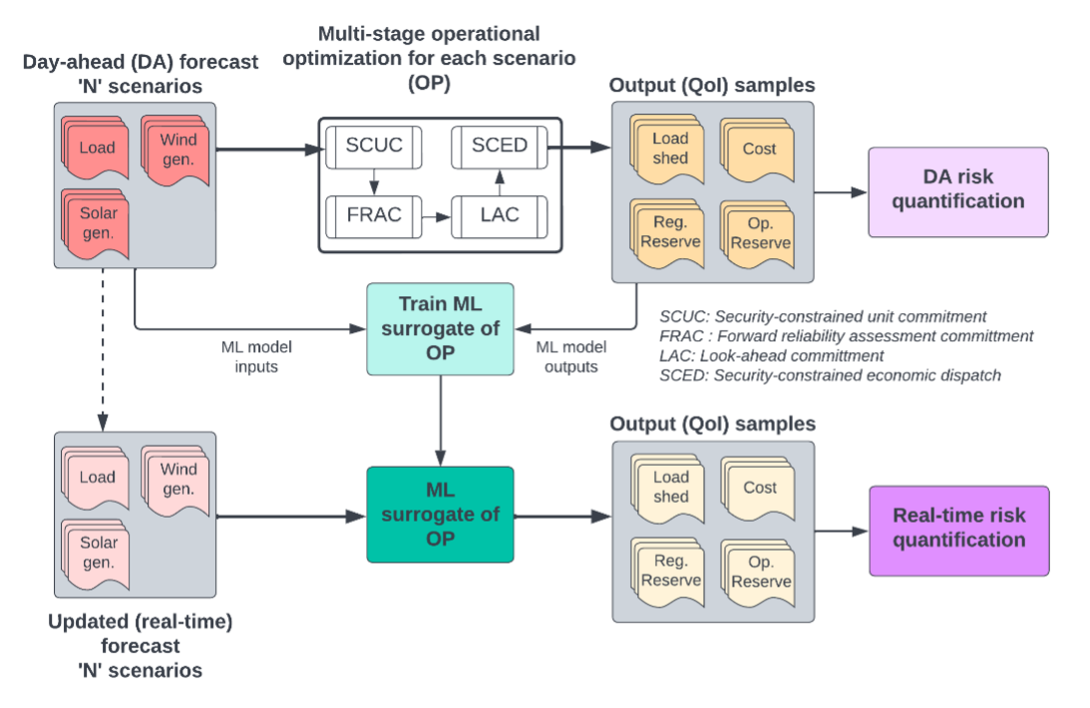
Machine Learning for Additive Manufacturing
- Gaussian process (GP) surrogate models for output quantities of interest (e.g., porosity, geometric accuracy, surface roughness, residual stress)
- GP surrogate models for model discrepancy, to correct the model prediction, trained using multi-physics simulations (fluid, thermal, mechanical).
- Computationally expensive high-dimensional multi-physics models are used for the simulation of laser powder bed fusion (LPBF) additive manufacturing.
- Computational efficiency in the construction of surrogate models is achieved by using dimension reduction techniques such as active subspace, principal component analysis (PCA), and singular value decomposition (SVD).
- Deep neural network (DNN) to model the bond formation process and mesostructured of printed fused filament fabrication (FFF) parts.
- Physics-informed machine learning (PIML) to improve the prediction accuracy and physics consistency of machine learning models.
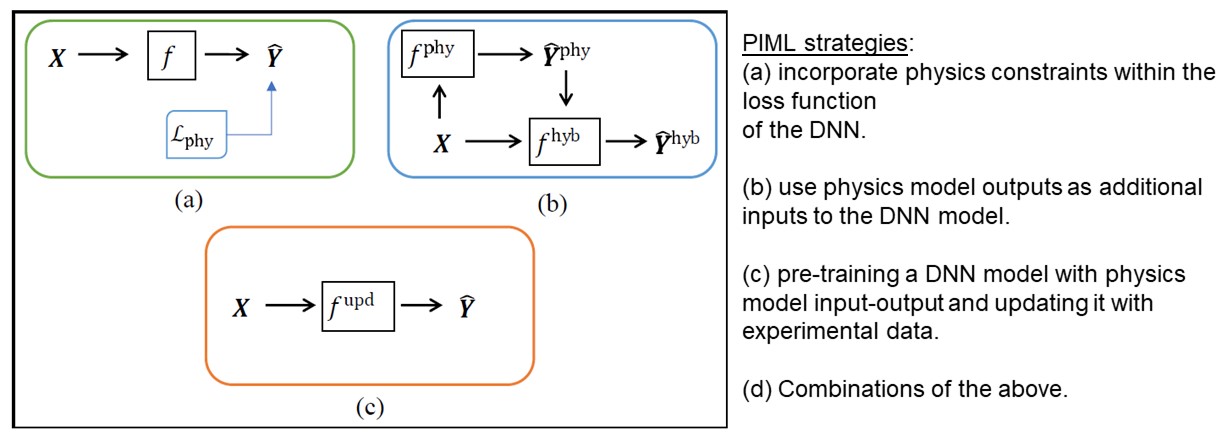
Extrapolation of dynamics multi-physics models to untested conditions
Applying ML tools (e.g. artificial neural networks) to
- Create a hybrid physics-ML model, where ML is used to correct model form errors in the physics model
- Create surrogate ML counterparts of physics models of dynamic systems à use for non-intrusive evaluation of model errors
- Use ML models à transfer information (model errors and discrepancies) from tested configurations/locations/load cases to untested prediction configurations/locations/load cases.
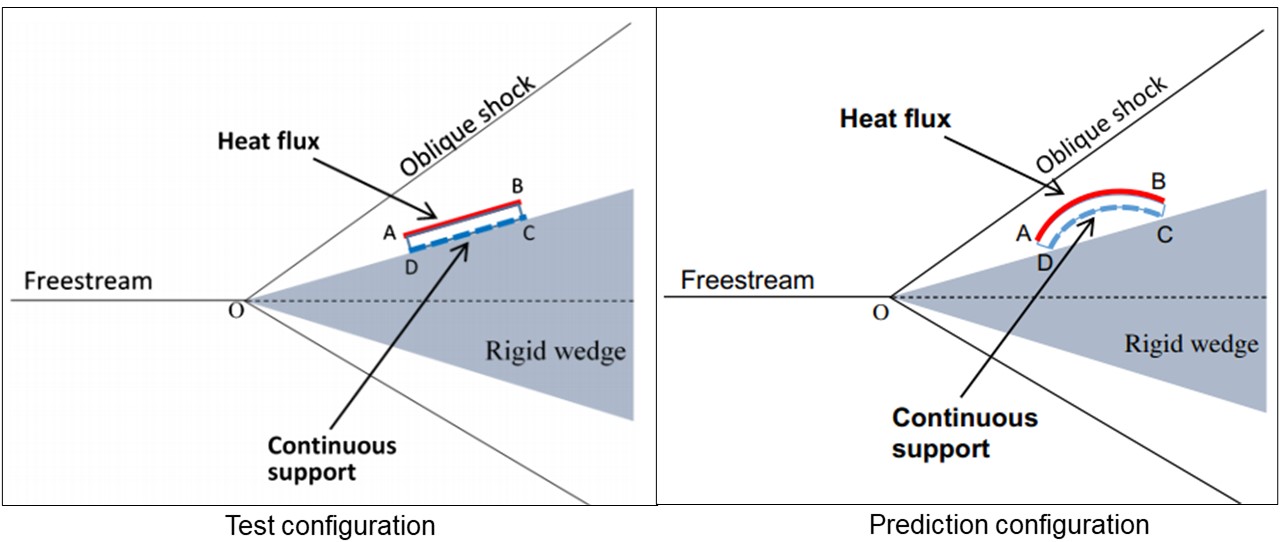
Ensemble machine learning for aviation incident risk prediction
- Aviation safety reporting system (ASRS) data
- Support vector machine (SVM) model to obtain risk category from event synopses
- Deep neural networks (DNN) to model the complex relations between event contextual features and event outcomes
- Fusion of two machine learning models to perform risk categorization

Multi-fidelity machine learning for en-route safety assessment
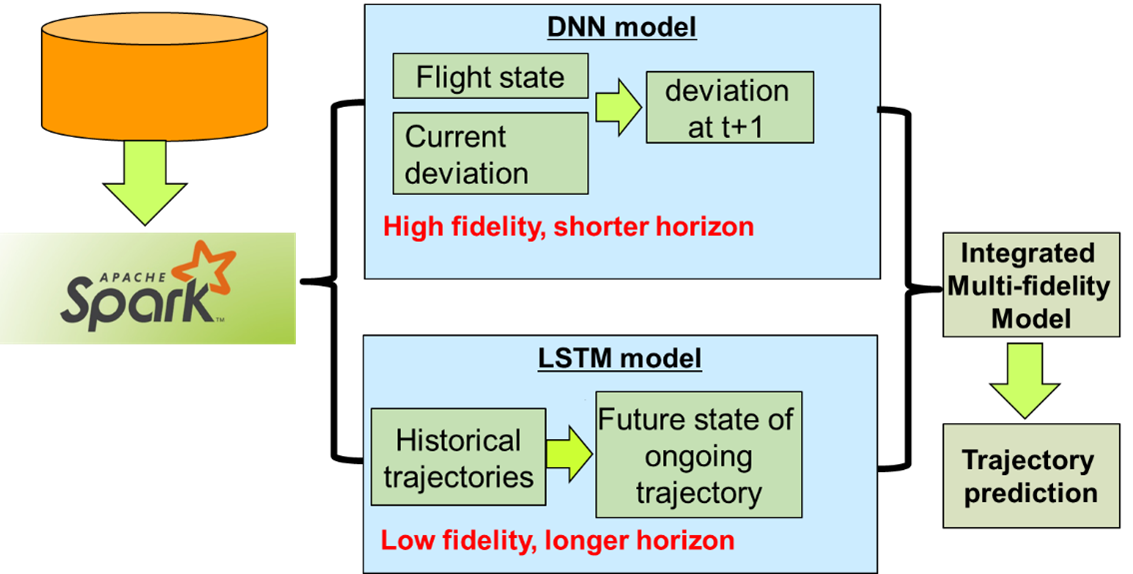
- FAA – system wide information management (SWIM) data for flight trajectories
- Deep neural network (DNN) for one-step-ahead flight trajectory prediction
- Deep Long Short-Term Memory (LSTM) neural network for longer-term flight trajectory prediction
- Multi-fidelity prediction by blending the two deep learning models
Bayesian deep learning for aircraft hard landing safety assessment
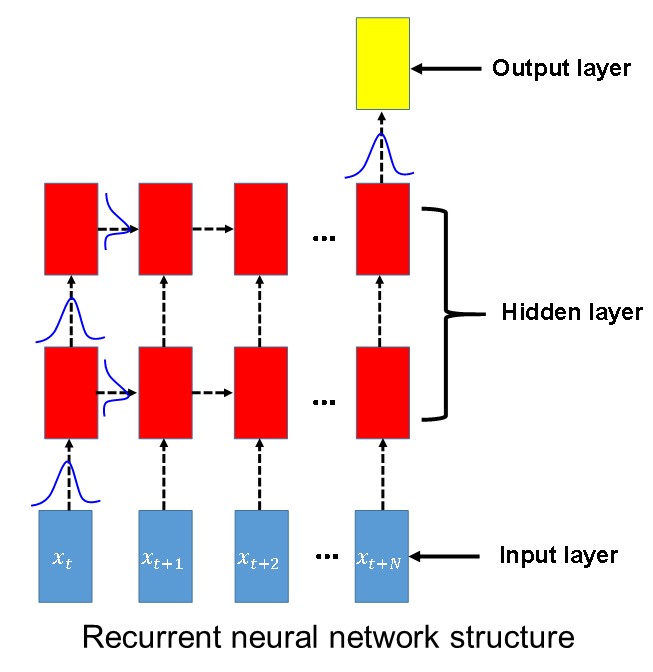
- DASHlink data on entire flight trajectory à extract landing information
- LSTM neural network for early warning of hard landing
- Bayesian neural network to capture epistemic uncertainty in model prediction
Bayesian network for aviation accident risk prognosis
- Analyze the historical passenger airline accidents that happened from 1982 to 2006 as reported in the National Transportation Safety Board (NTSB) aviation database.
- Develop a Bayesian network representation of all the accidents by capturing the causal and dependent relationships among a wide variety of contributory factors and event sequences in terms of aircraft damage and personnel injury.
- Estimate the conditional probabilities in the Bayesian network by calibrating a monotonically increasing function, whose parameters are calibrated using the probability information on single events in the available data.
- Automate the generation of the Bayesian network in compliance with the XML format used in the commercial GeNIe modeler.
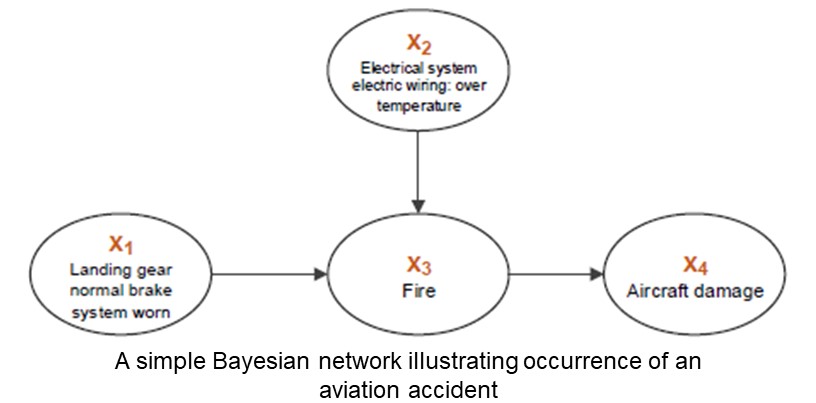
Airport ground safety assessment
- SWIM Terminal Data Distribution System (STDDS) for surface movement event data
- Spark for constructing sequences of graphs to represent the trajectories of multiple objects on the airport ground
- Graph neural network for predicting the probability distribution of future ground movements
- Conflicting risk assessment using the model prediction
Damage-adaptive rotorcraft maneuvering
- Diagnosis, prognosis and decision-making for rotorcraft (inspection/maintenance/repair, mission planning, operational maneuvers).
- Training of machine learning models (Gaussian process (GP), DNN, LSTM, reinforcement learning) using rotorcraft dynamics and finite element-based stress analysis models.
- Sensor data used for damage diagnosis and model calibration.
- Mission planning: Optimize future mission profile for safe mission completion, based on diagnosis of current vehicle state and prognosis of future damage growth.
- Damage adaptive maneuver: Adjust flight maneuvers to minimize vibratory loads and redistribute component stress, in order to minimize damage growth.
Concrete Damage Diagnosis with Vibro-acoustic Testing
- Supervised machine learning using training data constructed from 2-D FEA models for concrete structures with a single hidden crack.
- Two data-driven models constructed for damage diagnosis.
- Prediction model that estimates the side-band sum (SBSum) at a sensor location, from vibro-acoustic modulation (VAM) testing. Bayesian damage diagnosis localizes the damage using observed VAM test data.
- Classification model that uses VAM test parameters and the measured SBSum values at a particular sensor to classify the locations as damaged or undamaged.
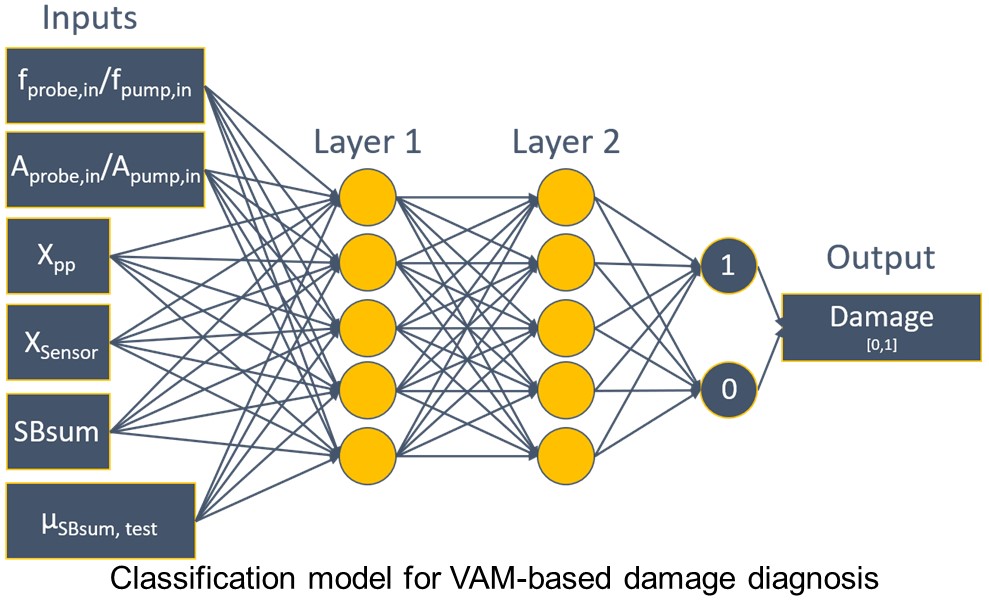
Concrete Damage Diagnosis with Harmonic Vibration Testing
- Damage detection with damage sensitive features identified by Singular Value Decomposition (SVD)
- Support Vector Machine classification model.
- Damage localization with crest factor and k-means clustering.
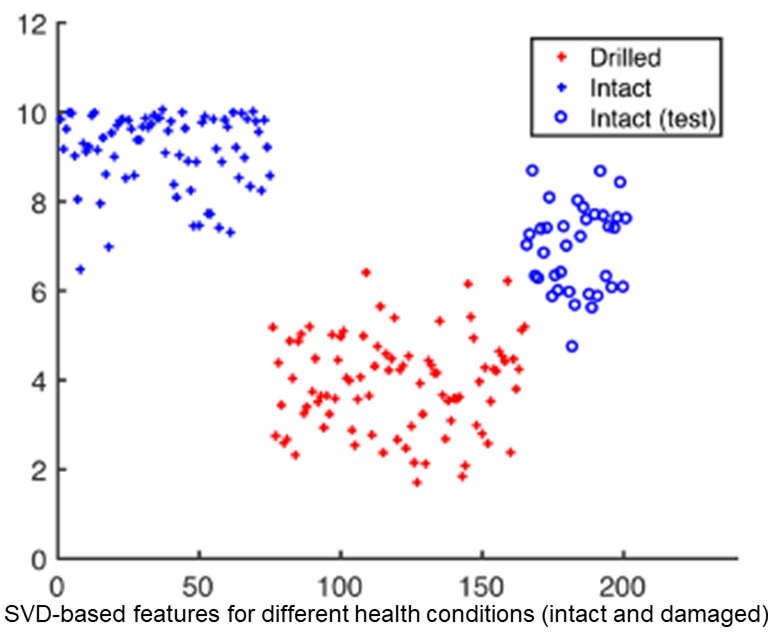
Concrete damage diagnosis based on infrared thermography
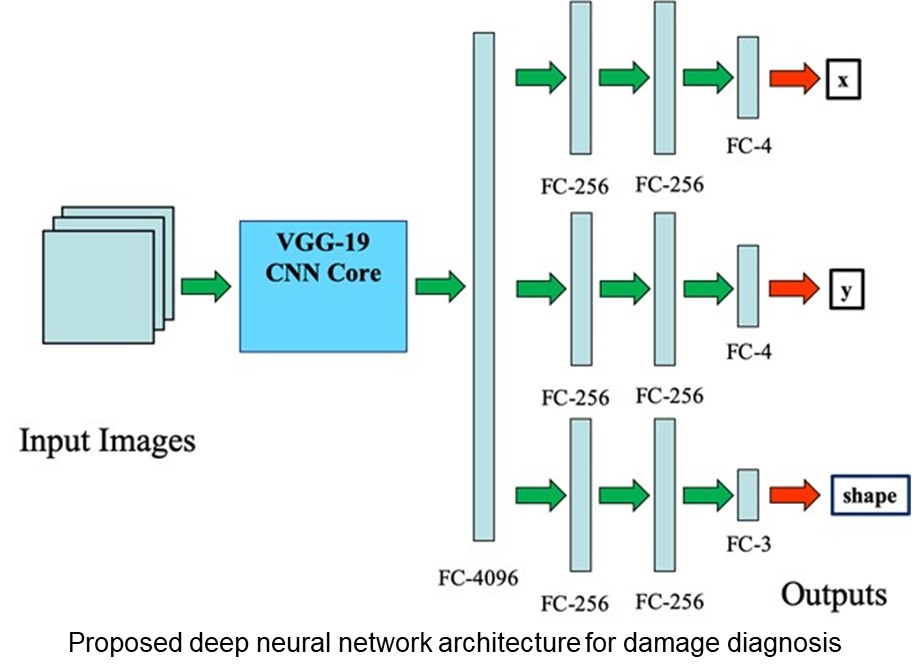
- Augment experimental data with 2D and 3D finite element models.
- Damage localization and quantification with transfer learning from sophisticated deep neural networks, such as VGG, ResNet, etc.
- Uncertainty quantification of damage diagnosis using Monte Carlo dropout.
Cancer patient safety
- Data collection from cancer patients through
- Passive surveillance with wearable sensors (activity, heart rate, and geolocation data)
- Active surveillance with mobile app-based patient/caregiver reporting of non-routine events and patient-reported outcome measures
- Construction of predictive model of clinical deterioration in patient using machine learning methods such as random forest, artificial neural networks, etc. to predict the possible occurrence of unplanned treatment events
- Enabling timely response to clinical deterioration through early detection and prediction of clinical deterioration
Funding

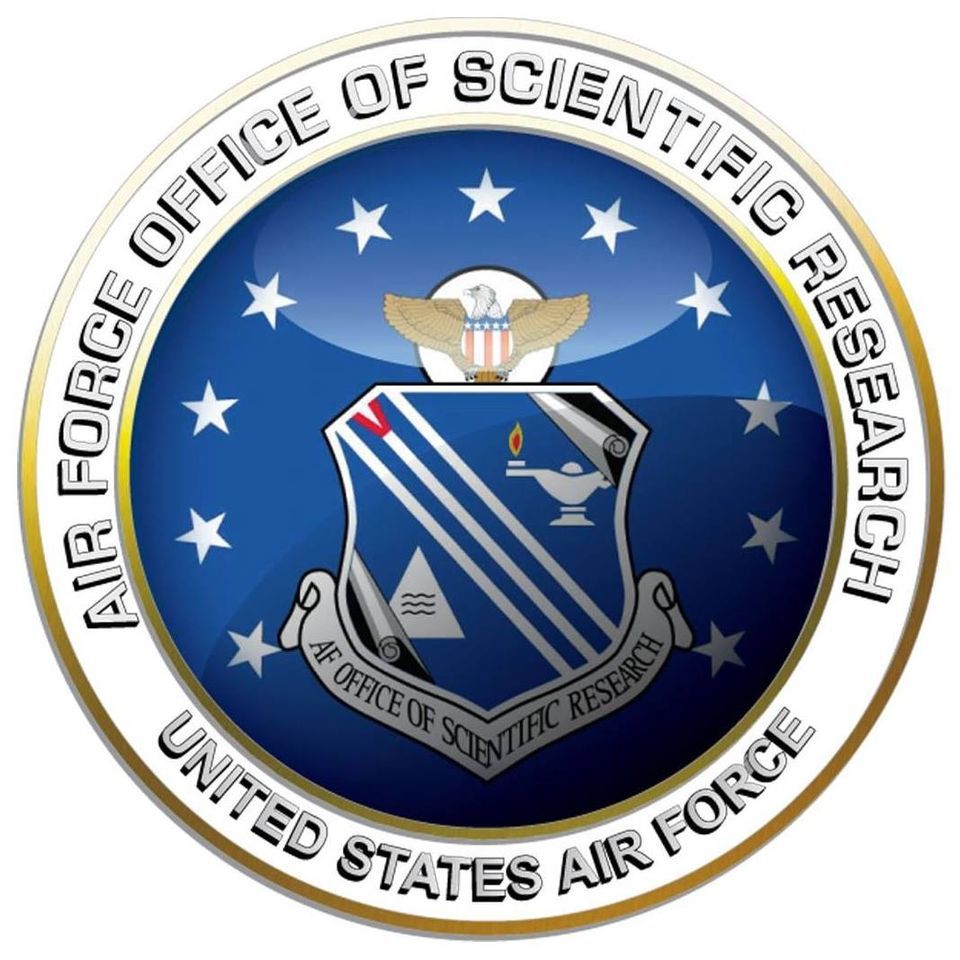

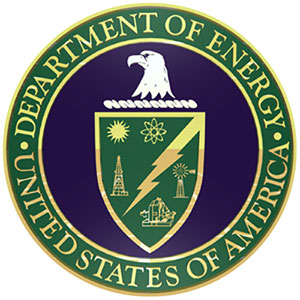
![]()
Current People
- Sankaran Mahadevan, Professor
- Pranav Karve, Assistant Research Professor
- Xiaoge Zhang, FedEx
- Abhinav Subramanian, Postdoctoral Research Scholar
- Yanqing Bao, Research Engineer
- Berkcan Kapusuzoglu, Ph.D. Student
- Yulin Guo, Ph.D. Student
- Sarah Miele, Ph.D. Student
- William Sisson, Ph.D. Student
- Sanqiang Zhong, M.Eng. Student
- Paromita Nath, Postdoctoral Research Scholar
Publications
- Kapusuzoglu B., Sato M., Mahadevan S., Witherell P., “Process Optimization under Uncertainty for Improving the Bond Quality of Polymer Filaments in Fused Filament Fabrication”, Journal of Manufacturing Science and Engineering, 2020 Aug 18:1-46
- Kapusuzoglu, B., Mahadevan, S. Physics-Informed and Hybrid Machine Learning in Additive Manufacturing: Application to Fused Filament Fabrication. JOM 72, 4695–4705 (2020).
- Zhang X., and Mahadevan S. "Bayesian neural networks for flight trajectory prediction and safety assessment." Decision Support Systems 131 (2020): 113246.
- Zhang X., and Mahadevan S., "Ensemble machine learning models for aviation incident risk prediction." Decision Support Systems 116 (2019): 48-63.
- Subramanian, A., & Mahadevan S. “Bayesian estimation of discrepancy in dynamics model prediction.” Mechanical Systems and Signal Processing 123 (2019), 351-368.
- Subramanian A., & Mahadevan S. “Model Error Propagation in Coupled Multiphysics Systems.” AIAA Journal 58(5) (2020), 2236-2245.
- Bao Y., and Mahadevan S., "Harmonic vibration testing for damage detection and localization in concrete." Structural Health Monitoring 18.5-6 (2019): 1820-1835.





